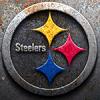Hi all,
I am going to experiment today and try to nail down a process for preparing photos for engraving on anodized aluminum.
I do a fair amount of photo engraving on wood, however I want to do more on another substrate.
How do you process you photos for engraving on anodized aluminum or other coated metal?
What I am going to try:
1. Convert to 8-bit gray scale
2. Adjust Tones
3. Run some tests
I plan to get a roll of colored aluminum flashing from Home Depot for practice.
Thanks,
Dave





 Reply With Quote
Reply With Quote
 )
)



